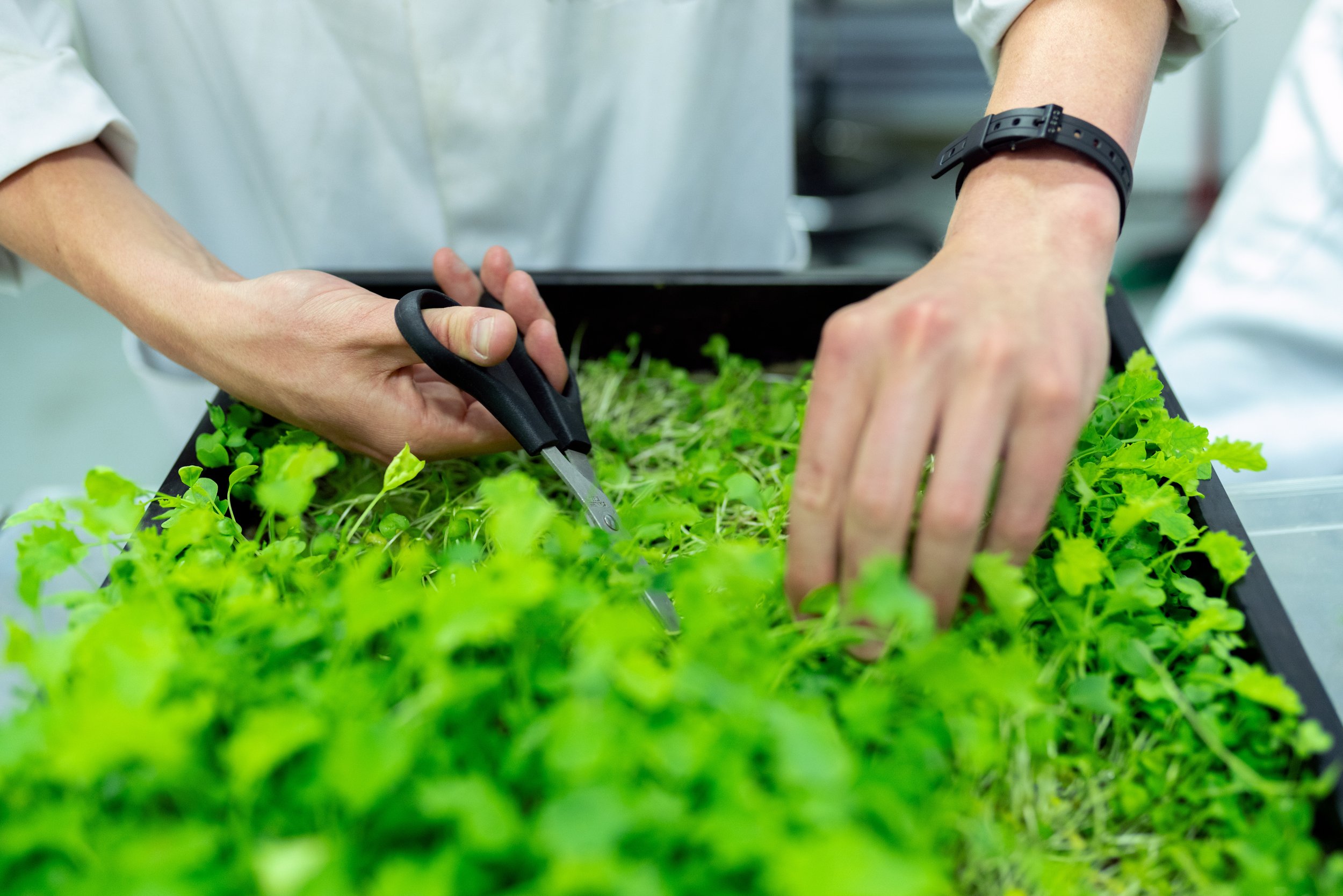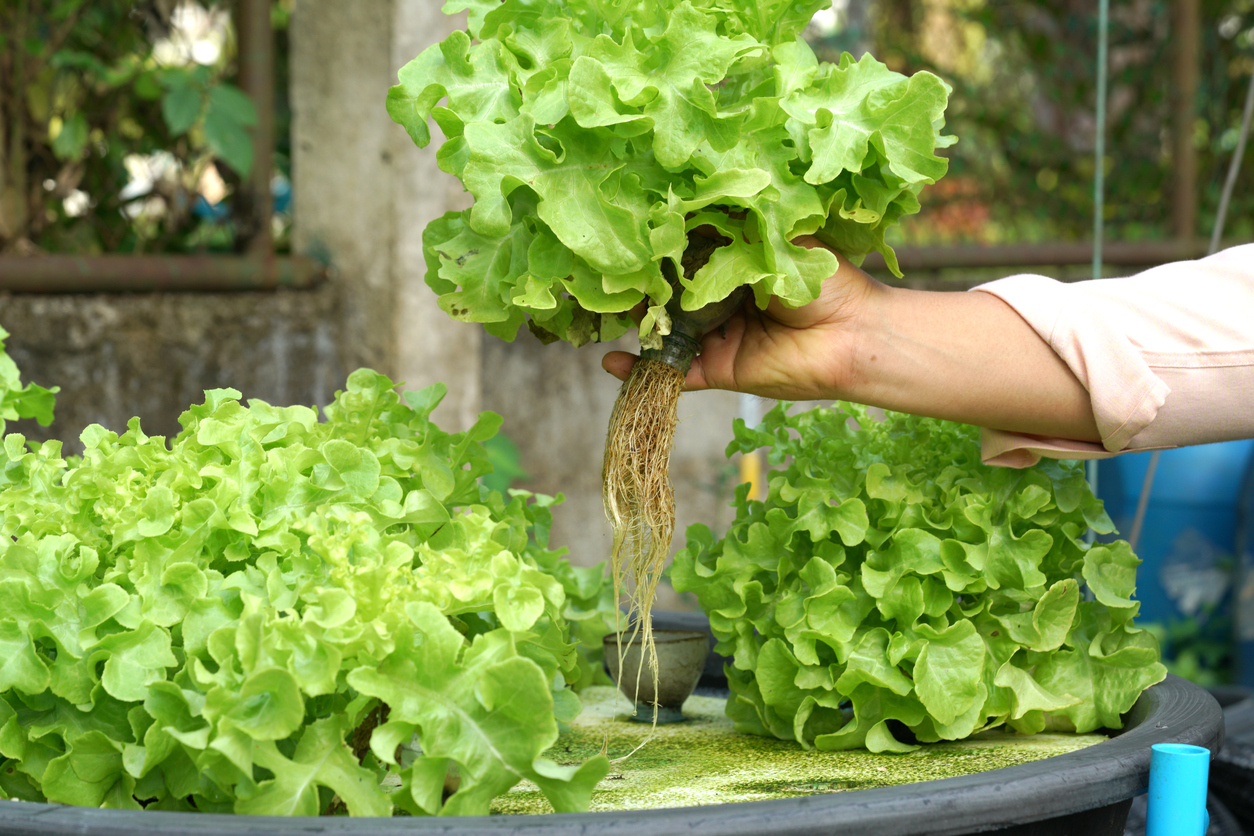Soil-based agriculture has dominated food production for tens of thousands of years. In recent years, so-called "novel farming systems" have become more prevalent. Many of these farming methods -- often involving Controlled Environment Agriculture (CEA) -- are capital intensive to start-up. Funding for these projects can be hard to come by from traditional agriculture lending sources who do not understand how to underwrite them. But for investors who want to play a role in the future of global food production, CEA projects can offer higher risk-adjusted returns. According to AgFunder's 2017 "AgriFood Tech" report, investments in novel farming systems jumped 223% from the previous year. Some examples of novel farming systems are described below.
Hydroponics
Hydroponic farming involves is a method for growing plants without soil, using mineral nutrient solutions in a water solvent. Hydroponics can rapidly help serve unmet demands for fresh organic vegetables, grown close to their market. To certify soil for organic farming after its been used in conventional farming takes years. Hydroponics operators can bypass that timeline.
Though limited by volume, growing food in hydroponic greenhouses has many advantages. Because the greenhouse's temperature and inputs can be precisely controlled, plants grow faster and face fewer diseases than their counter-parts outside in soil. A closed-loop irrigation system results in major water savings and uses less fertilizer, while not introducing pollutants into groundwater and soil. These greenhouses can be adapted to many different crops, and facilitate ease of rotation, which enable the farmers to more quickly react to changing consumer demand. Growing hydroponic vegetables closer to consumers will help reverse the trend of foreign organic produce imports and transporting food across the oceans.
Aquaculture
Aquaculture is the breeding, rearing and harvesting of plants and animals in all types of water environments, also known as fish farming. Currently, America's aquaculture industry supports only 6% of US food demand, producing primarily oysters, clams, mussels, and some fish. About 90% of fish consumed by Americans is imported, increasing fish prices and contributing to the country's trade deficit. Global production of fish is inconsistent, depending on weather patterns and biological factors (such as disease and predators), and as a result prices to distributors fluctuate.
Today, less than half of the world's fish population is sourced from aquaculture. Over 90% of fisheries around the world are either over-fished or fully-fished. 31.5% of fish stocks are taken at a biologically unsustainable level, while 58.1% are already fully-fished. It's clear there's a need for more fish protein to meet demands, and aquaculture can be an environentally-sustainable solution.
Vertical Farming
Vertical farming is the practice of producing food in vertically stacked layers or on vertically inclined surfaces. Today, about 38% of the total landmass of the earth is committed to soil-based agriculture. Factor in the increase of human population and urban development, and arable land for soil-based agriculture is only going to decrease over time. Vertical farming is a solution to help this problem, and offers many other advantages to vertical farming.
Vertical farming eliminates agricultural runoff into water sources, significantly reduces use of fossil fuels from farm machines and the transport of crops, and makes use of abandoned or unused properties, such as empty warehouses and skyscrapers. There's also year-round production with vertical farming, which can help keep up with the global demand for food.
Aquaponics
Aquaponics is the combination of aquaculture and hydroponics that grow plants and fish together in one integrated system. Together they create a natural ecosystem where the fish waste provides an organic food source for the plants, and the plants naturally filter the water for the fish.
Aquaponics significantly reduces the use of water. The system relies on the recycling of nutrient-rich water continuously with no toxic run-off using only 1/10th of the water of soil-based gardening, and even less water than hydroponics or recirculating aquaculture. The nutrients in the water from the fish make the plants grow faster, which can produce more vegetables in a shorter time span, as opposed to soil-based production. There's also less land needed for aquaponics, as water and nutrients are constantly provided it grows plants close together with the main requirements for spacing being access to light.





